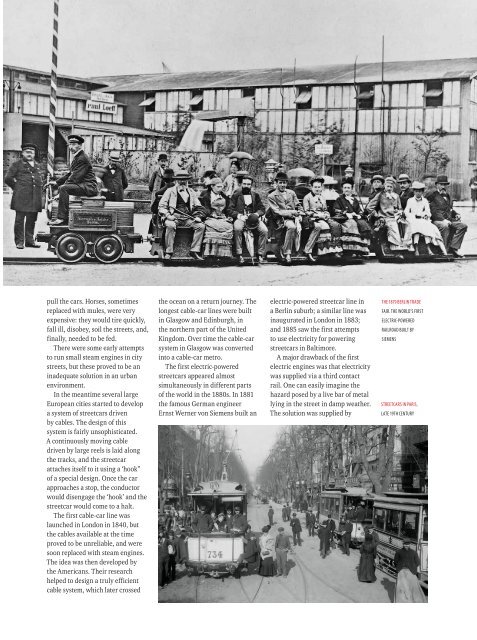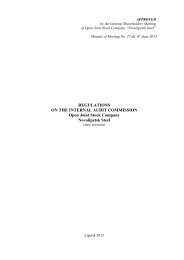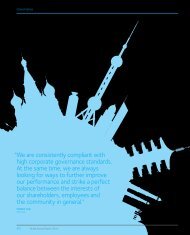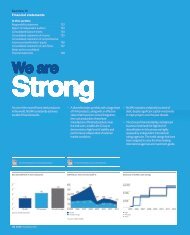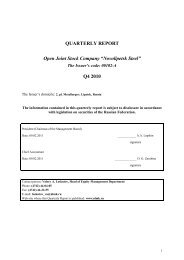Create successful ePaper yourself
Turn your PDF publications into a flip-book with our unique Google optimized e-Paper software.
Panorama AROUND THE WORLD 21<br />
pull the cars. Horses, sometimes<br />
replaced with mules, were very<br />
expensive: they would tire quickly,<br />
fall ill, disobey, soil the streets, and,<br />
finally, needed to be fed.<br />
There were some early attempts<br />
to run small steam engines in city<br />
streets, but these proved to be an<br />
inadequate solution in an urban<br />
environment.<br />
In the meantime several large<br />
European cities started to develop<br />
a system of streetcars driven<br />
by cables. The design of this<br />
system is fairly unsophisticated.<br />
A continuously moving cable<br />
driven by large reels is laid along<br />
the tracks, and the streetcar<br />
attaches itself to it using a ‘hook”<br />
of a special design. Once the car<br />
approaches a stop, the conductor<br />
would disengage the ‘hook’ and the<br />
streetcar would come to a halt.<br />
The first cable-car line was<br />
launched in London in 1840, but<br />
the cables available at the time<br />
proved to be unreliable, and were<br />
soon replaced with steam engines.<br />
The idea was then developed by<br />
the Americans. Their research<br />
helped to design a truly efficient<br />
cable system, which later crossed<br />
the ocean on a return journey. The<br />
longest cable-car lines were built<br />
in Glasgow and Edinburgh, in<br />
the northern part of the United<br />
Kingdom. Over time the cable-car<br />
system in Glasgow was converted<br />
into a cable-car metro.<br />
The first electric-powered<br />
streetcars appeared almost<br />
simultaneously in different parts<br />
of the world in the 1880s. In 1881<br />
the famous German engineer<br />
Ernst Werner von Siemens built an<br />
electric-powered streetcar line in<br />
a Berlin suburb; a similar line was<br />
inaugurated in London in 1883;<br />
and 1885 saw the first attempts<br />
to use electricity for powering<br />
streetcars in Baltimore.<br />
A major drawback of the first<br />
electric engines was that electricity<br />
was supplied via a third contact<br />
rail. One can easily imagine the<br />
hazard posed by a live bar of metal<br />
lying in the street in damp weather.<br />
The solution was supplied by<br />
THE 1879 BERLIN TRADE<br />
FAIR. THE WORLD’S FIRST<br />
ELECTRIC-POWERED<br />
RAILROAD BUILT BY<br />
SIEMENS<br />
STREETCARS IN PARIS,<br />
LATE 19TH CENTURY


